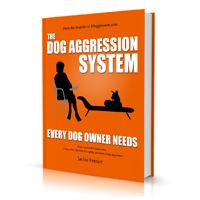Your cart is currently empty!
How to stop a dog from jumping up
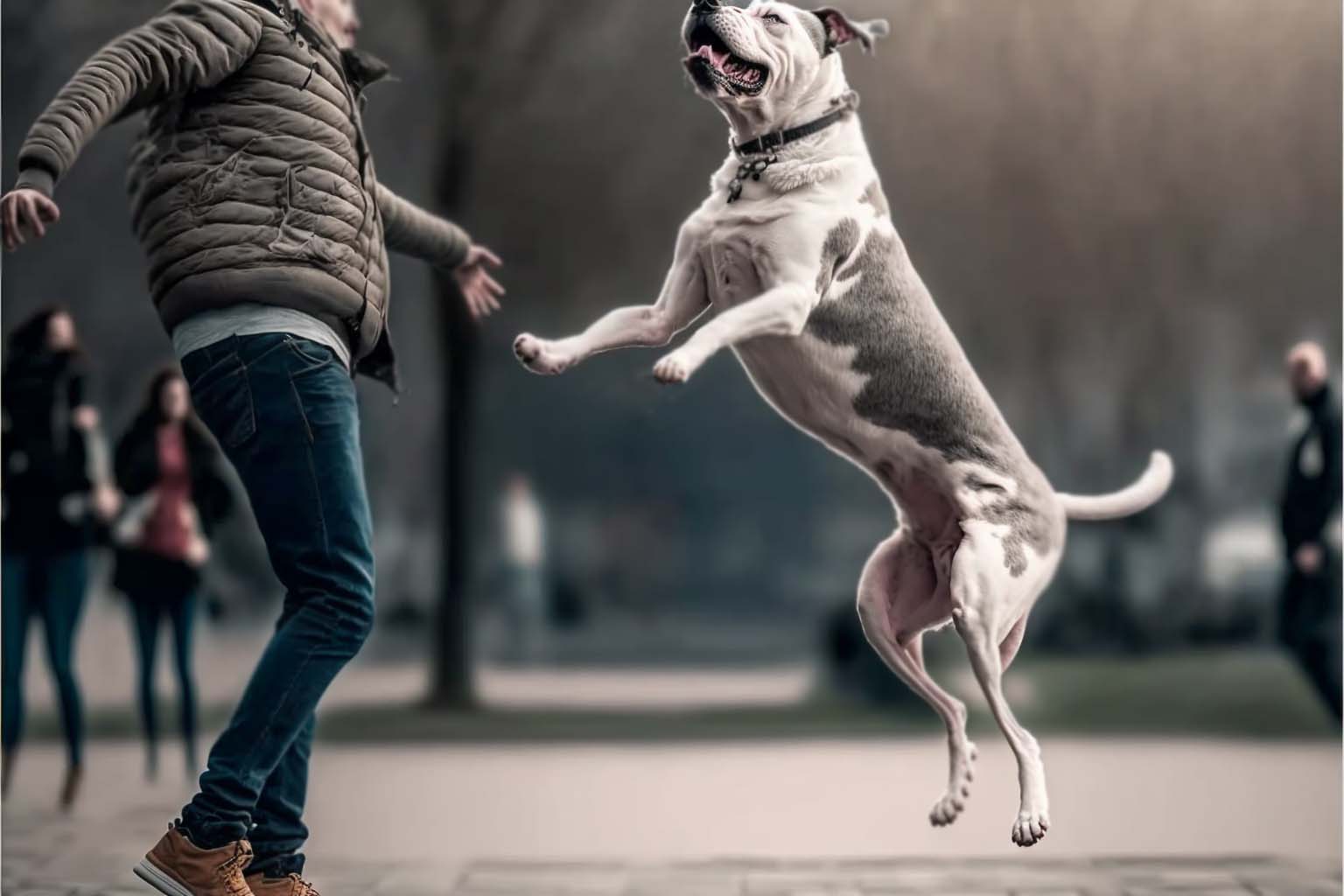
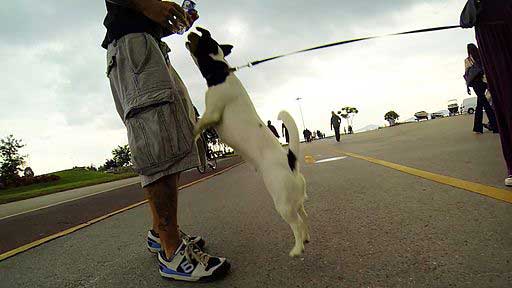
If you have problems stopping your dog from jumping up you are not alone! But it’s not always an easy problem to correct. We have some some strategies to make it easier. But before we get into how you can change your dog’s behavior, it helps to understand why they do it.
Why do dogs jump up? Is it dominance?
There are plenty of “leader of the pack” trainers who suggest dogs do this because they are trying to assert their dominance. But there is actually no proof that this is true nor does it make sense.
However, it has been observed that wolf pups to jump up and lick to cause their mother to regurgitate her food so they can eat (sorry about that visual, but the pups are cute). So what is going on here? The pups are hungry, they are excited, and they want attention. They may even be trying to get the food first before their brothers and sisters.
But it’s unlikely they are trying to dominate their mother.
Most pups jump up. And most adult dogs will tolerate this from pups until they reach a certain age. That certain age is usually the age when adults stop tolerating all sorts of bratty behavior from pups. The common way healthy normal adult dogs handle this is simply by ignoring or walking away. Like us, dogs are social animals and they don’t really like this.
We trained the dogs to jump up. By accident. Whoops.
We didn’t know we were doing it, but we actually strengthened their tendency to jump by giving them what they were looking for when they jumped: attention.
The difference between adult dogs and people is that we find it hard to walk away and ignore them. We either feel bad for their loving furry little hearts, or we feel annoyed and frustrated. So we continue to provide attention, whether it’s to tell the jumper to get down, or wave our hands around, or in many cases, outright patting and affection. Owners do it, their kids do it, their friends and neighbors do it. We are just guilty. Don’t beat yourself up about it, just realize you do it.
So stopping a dog from jumping may take some effort because we have essentially trained them this is a good way to get us to interact with them.
But there are other factors involved in jumping up. It typically occurs when there is a high levels of excitement, especially when people come into the house, or during greetings. It can also occur when a dog is anxious which can happen during greetings, too. We assume their excitement to see us is a result of pure happiness, but given the amount of dogs who submissively urinate, it’s easy to assume that there may be a level of conflict or anxiety as well, and this may be made worse by any punishment we may do when we come home. They might not know what the person is gig to do, or what they should be doing, and sometimes jumping up can provoke some kind of reaction that tells the dog what the situation is.
There may be a component of anxiety or frustration with jumping up during training sessions or during leash walks. It’s interesting to see that some dogs will jump up when they are in a leash pulling to get to see someone, but not when the dog is loose in the yard.
It helps to try to work out what is motivating the dog to behave this way because it may give you a clue about what you are doing that is facilitating it.
Reframe: teach them to, rather than teach them not
People think that punishment teaches a dog not to do something. It doesn’t really. Punishment, when it works, only suppresses the behavior by teaching them to avoid the punishment. With the right motivation the dog will jump up again under the right circumstances, especially if you haven’t identified why they are doing it, and what they should be doing with that inclination.
What you need to do is teach them something else instead. But if you are doing that, you don’t need to punish. You only need to interrupt it. And besides punishment can erode your bond with them and potentially cause, or increase an anxiety problem which can cause more problems.
Teaching them to do different things tells them what they should be doing, and gives them options and choices.
Learn how to change the behavior from jumping up to something we like
Your dog has learned how to jump up, and has benefited from it in some way whether he or she is doing it to resolve a social confusion or conflict, cope with anxiety of frustration or to get some kind of social interaction. Either way, they continue to do it because it’s working for him or her on some level. Change will not happen over night for most dogs (although there are some dogs that love clicker training so much that it is very easy for some).
There are a lot of useful articles out there on how to deal with jumping up (and some not so useful ones that insist the dog is trying to get one over on you and steal your leadership, but anyway) so we thought we would approach it a little differently, but adapting some strategies in our e-book on treating aggression.
1. Management and prevention
You will need to stop giving your dog what he wants when he jumps up, and that is most likely attention. But this can be tough when it comes to getting your kids to not give attention, and even harder to get guests or people on the street to ignore your dog. People just don’t seem to be able to help themselves.
So when someone comes, make sure he doesn’t get a chance by leashing or tethering him or her, or putting them behind a gate or door before the person even comes in. Avoid people on the street if you can until you can teach him or her to be calmer. It’s actually amazing how much better people feel when they realize that they can simply prevent it by not giving the dog a chance.
But prevention is a key word. Management does not change the jumping up behavior, it merely prevents it from happening. But why is this a good idea? Because each time we do something – anything – our brain becomes a little better at it. The more laden it is with emotion (excitement, anxiety, what have you), the more it will be imprinted. The brain becomes faster and more efficient. And this behavior becomes more competitive with other behavior choices. That’s why it is so hard to break bad habits. So if we keep giving the dog attention for jumping up, even just once in awhile, it will be even harder to turn something else – a behavior we like – into a habit.
2. Reduce stress
Ask yourself if there is a stress component in why your dog jumps.
For example, if your dog is doing it while you are training him, ask yourself if you dog understands what you want or are they getting confused.
If your dog starts to jump up while playing, ask yourself if it is strictly play or is your dog getting some of his wires crossed, and is getting confused. Does your dog still think it’s play, or is he or she not too sure? How can you be sure?
If your dog gets excited when visitors come into the house, perhaps put your dog into another room while the person comes in and then let them out on a leash in 10 minutes or so. This will not eliminate jumping up at the door, but there is a high level of excitement when people cross the threshold that does not seem to be as intense when the person has been in the house for awhile. This may be a good practice to combine with Targeted Behavior Modification which we touch on below. Reduce the emotional load so that you have a better chance to train them to do something else.
Alternatively, if your dog is sometimes ok, then you might try a short leash on him, or a tab in the house (a cut off leash will do so it doesn’t get caught on anything). Just enough leash for you to grab is he starts to jump up for you to interrupt. Not ideal, but better than letting it happen.
Some dogs won’t jump if you squat down to say hello before they jump. Is this because the dog feel he does not need to try to get to your face, or because you have just reduced his or her anxiety by becoming smaller. Hard to know. Might depend on the size of your dog and what is going on in their little furry heads. But some dogs will taken advantage of your squat to knock you over for more fun. Try it out and see what works here.
3. Relationship Build
Our e-book discusses relationship building because it can be so useful in getting a dog to be more secure and more willing to look to you about what he or she should be doing next, especially in times of uncertainty. Our SAW program in the e-book, which is just a slightly modified deferment program and easy to implement, can help with this as well as help your dog get used to sitting for what he or she wants. Simple ask your dog to sit calmly, pay attention to you until you let him or her know what they should be doing. There are other ways to increase your bond, too. Walking your dog, training your dog and playing with your dog (if he likes this) are some of the ways.
And increasing the bond you have with your dog can help reduce your dog’s need to get affection and attention from others. Helpful! But your dog still may be attracted to the new exciting thing, so we talk about this in the next point.
4. Environment Enrichment
Environmental enrichment is important for all dogs. Part of environmental enrichment includes social stimulation. If your dog is a puppy or a young adult, there need for social stimulation is often much higher than it is for an older dog. If your dog is good with people and other dogs, try getting your dog to meet more people and dogs in other situations where he or she is less likely to jump up. This could be in a dog group, or a dog class or at an off leash park. If your dog is not too unruly and good with people, you might ask if it is okay for you to take him or her with you when you go visiting. If your dog is good with children, hang out at the schools – kids love to say hello, but you don’t even have to be close enough for your dog to get plenty of stimulation being near by. But whatever you choose make sure that he or she can be calm. If they are twisting around at the end of their leash, you are just causing more frustration. If you see string of signs of anxiety (and make sure you know what these are) then this is not going to help either. Either move to a place where you dg can be relaxed, or avoid that particular scenario.
If your dog is left alone during the day and is bored, his excitement level when people come in will be much higher and he will also be more demanding of your attention. Hiring a dog walker might be helpful for those dogs who are alone all day. But stop giving him or her attention when they jump up. Instead find a way to give attention to your dog other times. Clicker training can be a really fun and stimulating activity for you and your dog to consider. You might also find it doesn’t take much.
5. Foundation training
In our book we talk about relaxation training as well as training self-control for aggressive dogs. Relaxation work can be used for those dogs who may be jumping out of frustration or anxiety. It can also help calm dogs down when they have been trained what it means to relax and how to do it.
But developing your dog’s ability to control his or her self-control can be essential in dealing with this kind of problem and can help your dog behave in many different situations. Self-control is like a muscle that can get tired and worn out so there are times when your dog just won’t be able to keep it together. On the other hand, self-control can be made stronger.
6. Targeted Behavior Modification.
This is fancy term for re-training, really. In our e-book this step is one that actually deals with the target of the dog’s anxiety or aggression directly. It is done by teaching him how to respond differently in a way that is incompatible with the undesired response. If your dog is anxious is can be especially helpful.
But even if your dog is just silly, the one technique we would want to focus on here that can help is called Counter Conditioning. If you substitute training for the word conditioning, you essentially have an idea of what we are suggestion: train your dog to do something that is incompatible with jumping up.
First thing you do is stop giving the dog whatever he is getting as the result of the jumping – in most cases, some form of interaction or attention. There will be what is called an extinction burst first however, and this may be why if you have tried ignoring your dog before, you have not be able to keep it up.
An extinction burst is when the dog tries even harder to get what he wants. It’s not all bad, extinction bursts comes in very handy when clicker training. But for now, this will be the one thing that convinces you it’s not working unless you can see it for what it is. But persist! And give credit to the dog. He probably just thinks you are broken and will keep trying until you are fixed. Stick within until he or she finally concludes it’s no use.
A common suggestion for is to train your dog to sit as a behavior that is incompatible with jumping. But if your dog is anxious, your dog might actually feel trapped having to sit while people approach him. In that case you might train your dog to become accustomed to being approached by people through relaxation work and counter conditioning first, and for that you need the foundation training. Understanding what stress and anxiety look like can help you recognize if this is a problem.
Another alternative for high-energy silly dogs is to give your dog a job to do. If you are lucky enough to have a second floor, train them to go collect objects from upstairs when someone first comes in (guests love that stuff!). Or get them to do tricks (go into a crate, lie down, roll over, lie on a mat might be good ones). But you need to train these things ahead of actually trying to use it and you need to use high value rewards to keep the dog highly motivated. Training and practicing regularly a good tip!
After your dog has done all these things when a guest arrives, he may then be ready to sit calmly.
If you choose to have your dog sit, once your dog gets up, you or the object of his affection should back up or even turn back on him. As soon as he puts his wee bottom on the floor you can approach. If attention is what your dog wants he will learn how to get it if you create a predictable environment he can learn from.
When you dog starts to get what he is supposed in the most mundane situations, you can start upping the criteria slightly. Enlist friends and family to help. Teach them what to do and practice without the dog, at first. Role play. People need practice, too. Once your dog starts being asked to sit calmly by a number of people, or to do a job, or lie down at his mat, or go to a crate, etc. he will start to generalize it better (dogs are not good generalizers, so they need to be taught in different scenarios).
ADVERTISEMENT
The Dog Aggression System Every Dog Owner Needs E-book
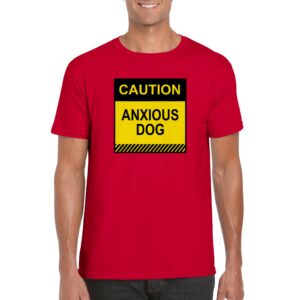
Anxious Dog Shirts only available in our shop
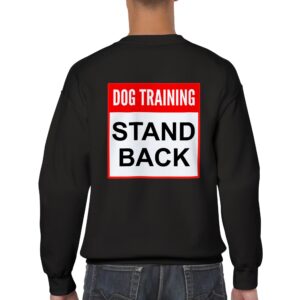
Keep people away with our Stand back shirts

